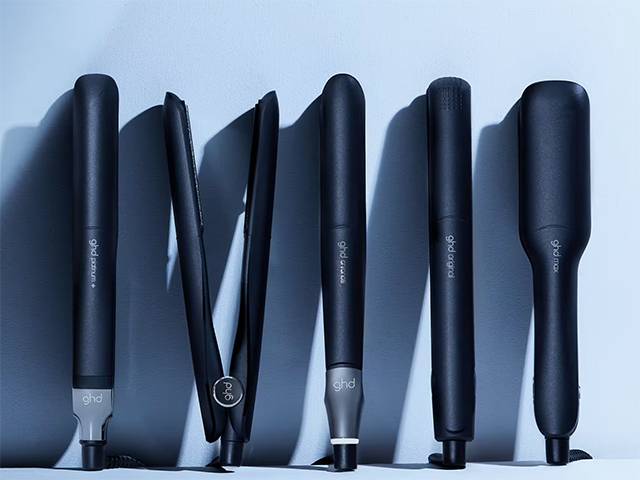5 Tips For Choosing A Hair Straightener That Will Not Damage Hair

Who doesn't love that sleek and chic look? Having the right hair straightener is one way you can look and feel amazing, but the reality is that many hair straighteners can cause irreparable damage to your hair. So, is there a hair straightener that won't damage your hair?
Regardless of the quality of the hair straightener, using heat to style hair can cause damage. However, certain hair straighteners are designed to minimise hair damage when used correctly. So, when you're ready to buy a new straightener, here are five helpful tips to consider when choosing the right one.
Why do some hair straighteners damage your hair?
Hair straighteners use compressed heat to temporarily lock hair in a straight position. When hair follicles are exposed to heat, they can change form. The hair straightener glides across the hair with a flat surface that heats it while compressing it to lie straight.
There are a few reasons why hair straighteners can damage your hair. Generally, using a hair straightener too often can lead to a breakdown of the keratin proteins in your hair or strip away the moisture, leaving you with brittle, dry hair.
Other causes also include straightening your hair with too high a temperature, inconsistent heat distribution creating hot spots in your hair, bad quality plate metal that can snag or catch on your hair, causing breakage, and finally, using the wrong technique while straightening your hair.
Tips on buying a Hair Straightener that won't damage your hair
Let's get down to business. So you want to buy a hair straightener that'll give you all the pros of looking fabulous while maintaining your hair's health, right? While you're out shopping, consider the following tips to help you choose the right straightener for you.
1. Don't go for the cheapest Hair Straightener
The temptation to buy a cheaper, more affordable hair straightener is so easy to fall into. But don't, it's a trap. While going for cheaper hair straighteners might be easier and more convenient, it'll impact you negatively in the long run. The biggest issue with cheaper, entry-level hair straighteners is that they don't offer you the same quality and consistency as your premium options.
Hairstylists often recommend buying medium"to premium-quality hair straighteners. They say cheaper models often use lower-quality materials and have a longer recovery time while straightening, which leads to heat being distributed unevenly and possibly damaging hair at the same time.
2. Buy with your hair type in mind
Next, you need to consider what type of hair you have. Your higher-end hair straighteners, like GHD hair straighteners, generally cater to all hair types, but the goal is that you want a hair straightener that will give you the best results, regardless of your hair type.
People with finer hair are more prone to getting hair damage from a straightener. This is where straighteners with flexible temperatures come in, allowing you to set the temperature to suit your hair best. To avoid damage with finer hair, avoid exceeding 165°C; the lower the temperature while still maintaining efficiency, the better.
Coarse or natural hair might need more heat to straighten it effectively. You shouldn't have to run through your hair multiple times to get it straight. Using a straightener that heats up to roughly 185°C should do the job.
3. What material should you use?
When we refer to the material used in a hair straightener, we're talking about the plate that presses together to straighten your hair. Over the years, several materials have been used for this plate, including ceramic, titanium, and tourmaline. Each material has its own benefits and downsides, with tourmaline showing the most promise for the material that damages your hair the least.
Ceramic plates are more affordable. They're great for finer hair, offering a gentler and softer touch than other materials. They're less likely to cause tangles and leave your hair looking shiny and healthy after straightening. However, cheaper hair straighteners with ceramic plates often don't have full ceramic plates but rather just plates with a ceramic coating over them. These can cause hotspots and damage to your hair.
Titanium is a great option if you're looking for consistency and quick heat. They use negative ions to generate heat, so they're better for the ends of your hair because they don't isolate the heat. Titanium plates should also work wonders for frizzy hair.
Lastly, Tourmaline plates are very similar to titanium plates, offering quick and consistent heat. They're known for trapping moisture in hair, promoting hair health, and reducing damage.
4. Get a straightener with temperature control
Choosing a straightener with changeable heat options makes a huge difference. Generally, more heat means faster straightening. But not all hair types and styles need extreme heat. So, to reduce hair damage, adjusting the temperature at which you straighten your hair might make a world of difference.
5. Consider its shape and size
You might not be aware of this, but shape and size play a significant role in the effectiveness of your hair straightener. The edges on the straightener you choose, whether straight or curved, make your straightener more versatile and effective in providing a consistent glide while you're straightening your hair. They'll also help you avoid your hair-catching and provide you with options of possibly using the straightener as a curler.
Final Thoughts
When it comes to hair health, there are some non-negotiables. While many straighteners might give you the sleek, stylish, and straight hair you're going for, they might damage your hair in the process. So, instead, follow these tips to help you choose a hair straightener that will ensure your hair's health while giving you that shine you're looking for.
MORE





